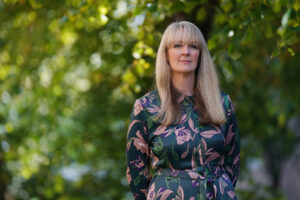Widening health gap in England – new IHE report
Institute of Health Equity demonstrates markedly different life expectancy depending where we live and makes link to cuts in local authority spending power.
Since 2011, life expectancy at birth – an estimate of how many years someone can expect to be in good health – has increased at a much slower rate than in previous decades. This is alarming but there are also noticeable differences depending on where you are in the country. As many as 17 local authorities saw significant increases in health inequalities before the Covid pandemic made things worse.
These are among the conclusions of a new report by UCL’s Insitute for Health Equity (IHE) to investigate and address the social determinants of health in an effort to improve health equity.
The IHE team worked from official figures published by the Office for National Statistics (ONS), National Audit Office (NAO) and Office for Health Improvement and Disparities (OHID). It studied every local authority in England, gathering data on levels of health in the region, inequalities in health and cuts in local spending power.
Of course, local authorities fund many of the services which help to reduce what can often be the drives of health inequalities, such as education, housing and social care. But since 2010, local authority spending power has been cut by an average of 34%.
According to the report, local authorities that experienced the highest cuts to their spending imposed by central government show lower life expectancy and greater health inequalities.
The stalling of the general increase in life expectancy at birth is, says the report, down to two key factors. The Covid pandemic saw life expectancy fall for women by 0.5 years and men by 0.6 years between 2017-19 and 2020-22. But even before Covid the rate at which life expectancy was increasing had significantly slowed compared to previous decades. Between 2000-02 and 2010-12, life expectancy increased by 2.3 and 3.1 years for women and men respectively; between 2010-12 and 2017-19, that figure was just 0.5 and 0.6 – growth effectively negated by Covid.
What’s more, a reduction in the life expectancy of women in the most deprived neighbourhoods in England was seen even before the pandemic struck. Inequalities recognised between the north and south of England have only widened: three of the nine regions in England (the North East, Yorkshire & Humber, and East of England) show increased inequalities in life expectancy for men.
So, what can be done? The answers seem to be at central government level. Professor Sir Michael Marmott, Director of the IHE, has written to leaders of the political parties, metropolitan mayors and local authority leaders about the findings of the new report. He has written to 58 MPs of constituencies wholly or partially in the regions most affected by these health inequities.
‘We need you to fight for all your constituents’ health,’ he says in his letter. ‘They are suffering avoidable ill-health and living shorter lives than they should due to poor policies and cuts to essential services.’
In related news:
Films explore physical and mental health impacts of poor living conditions
Hospital patients ‘less likely to die’ when treated by female doctors
















